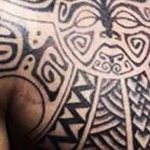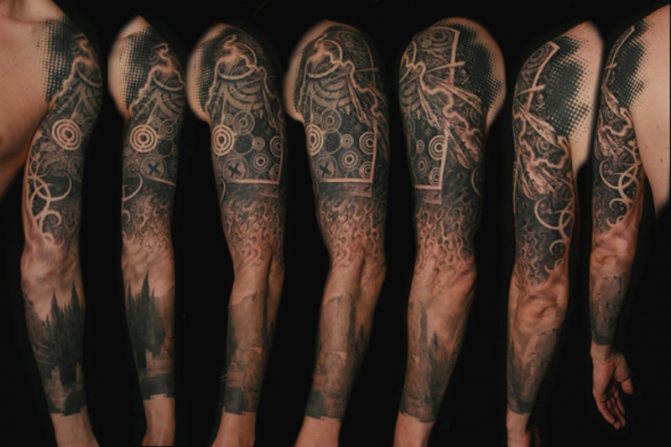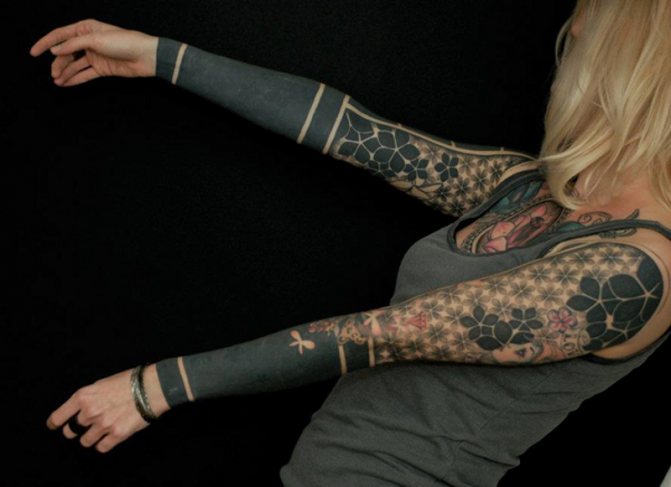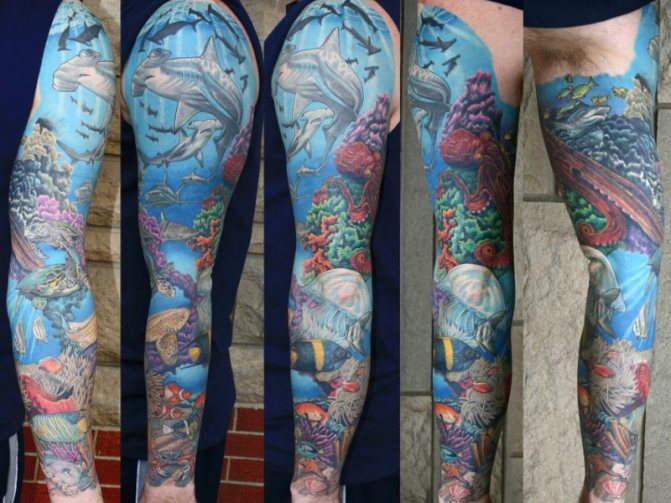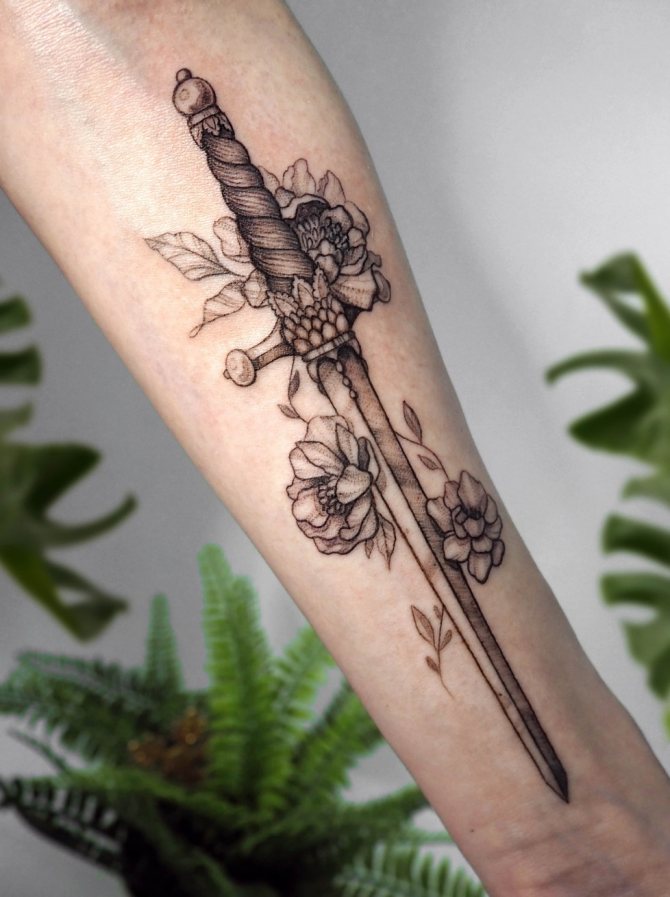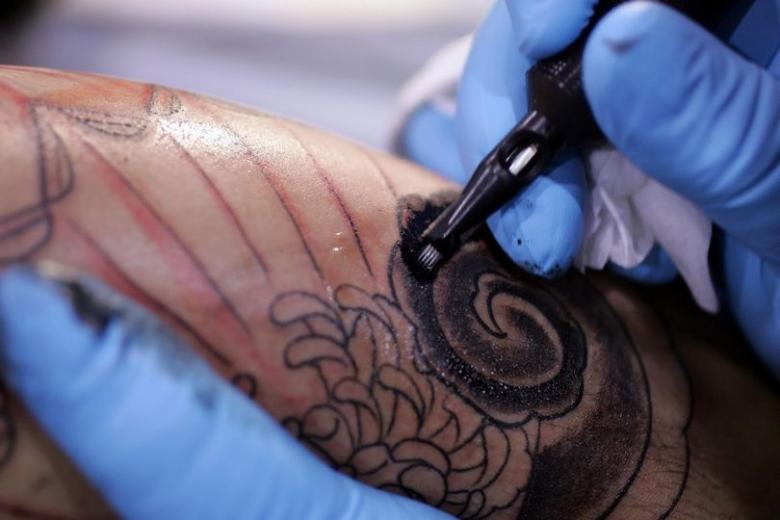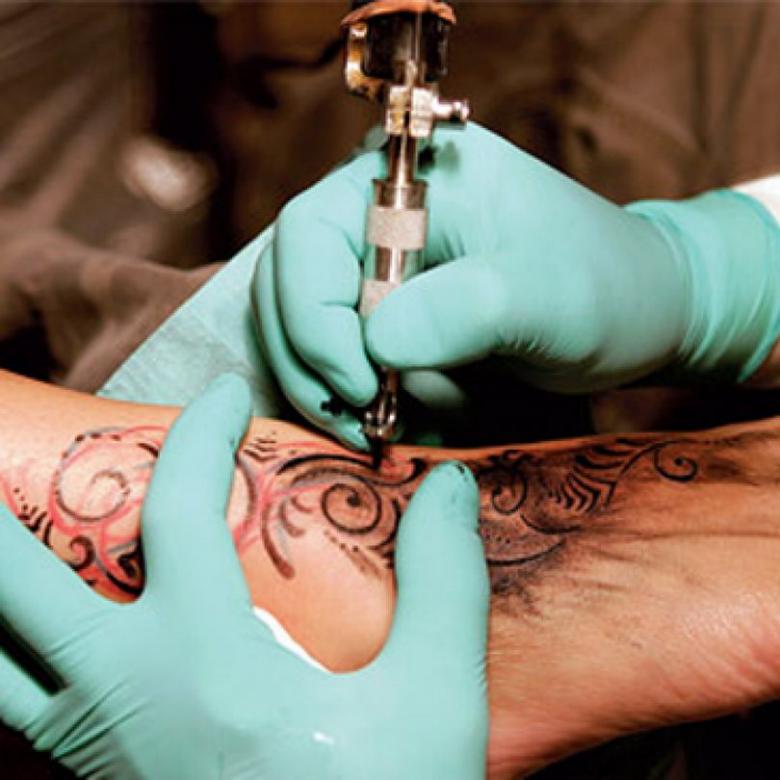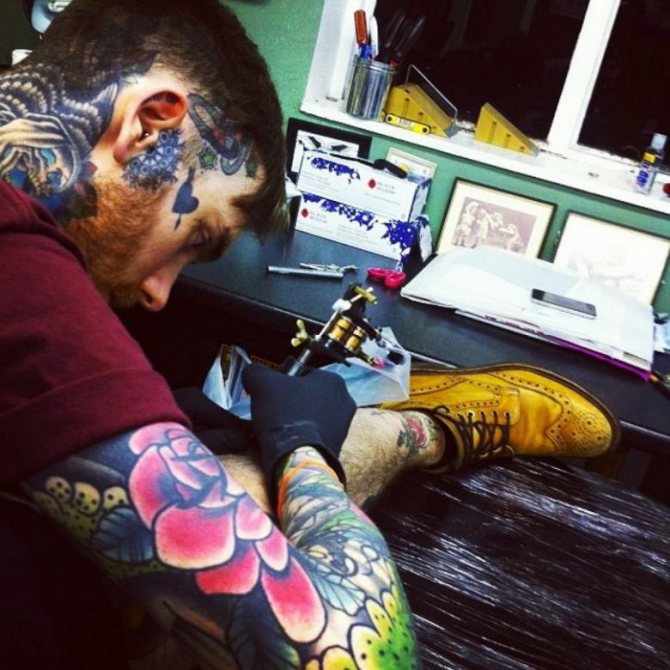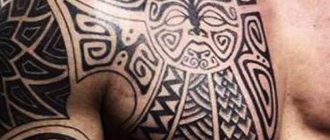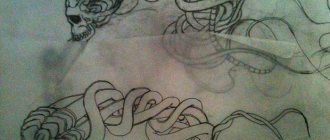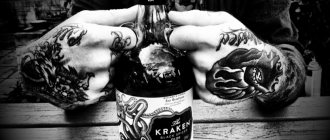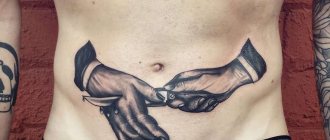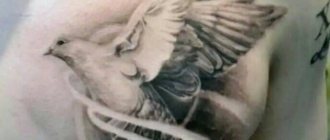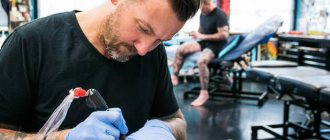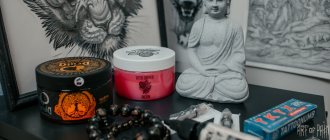How do tattoos work?

Let's understand what a tattoo is in its essence. A tattoo is a permanent or permanent drawing on the body, which is applied through trauma, piercing the top layer of skin, followed by the introduction of pigment into the dermis.
Before the image is painted on your body, there are several stages, which we will discuss below.
Choosing a pattern and a body part
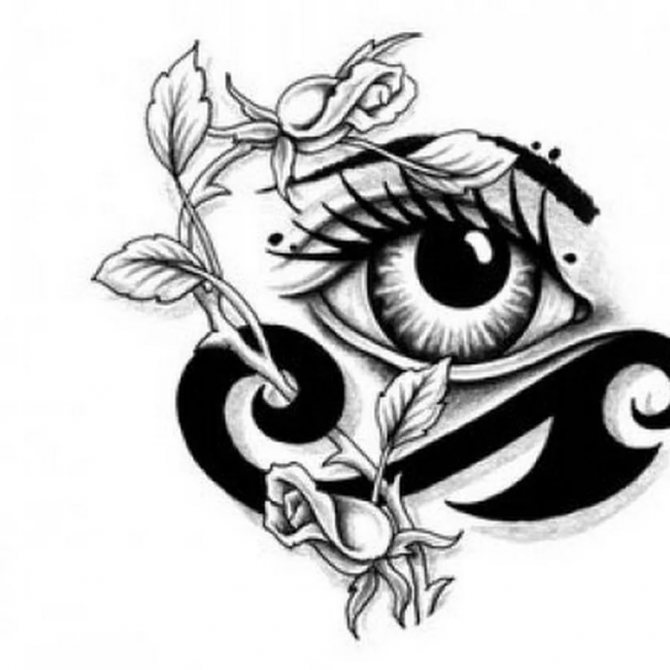

Choosing a drawing and choosing a body part are the most important points for the person who is going to subject his flesh for this cosmetic surgery. You should also remember that they are inseparable and adjust one to the other. The choice of the sketch depends on the purpose of the tattoo. It can be just an aesthetic pattern or an image with a meaning, as something personal as well as having a common meaning for all. As for the parts of the body, from a social point of view, it is not necessary to "score" the head, neck, hands, groin area.
adjustment of the pattern, details.
After the final determination of the pattern and place begins the work of the master. To begin with he should adjust, correct the pattern in accordance with the realities of the body, because you yourself understand that on paper is one thing, but in the curves of the body is another. Once the updated sketch is ready and agreed with the client we can move on to the next stage.
preparation for the application


Preparation for the application is a very responsible moment that requires a lot of attention from both sides of the procedure. On the client's side is the preparation of the body, or rather the blood. Do not take medications, especially those that help thin the blood and reduce its clotting, that is, antipyretics and painkillers, such as acetylacetic acid, paracetamol, analgin. Also, you should not, during the application, be sick with a cold, drink alcohol or be hung over.
From the side of the tattoo master is to ensure the sterility of the entire procedure. He must carry out all activities exclusively in gloves, to change the needle in front of you, to treat the tool and the skin surface with antiseptic. You should not forget that it is a small operation, but about that further. Also in the preparation of the tattooist is the drawing of the sketch. It is applied with the help of special paper, by the method of application which is similar to an ordinary carbon copy. During the work, the sketch on the body is treated with petroleum jelly, so that the picture is not erased.
application process
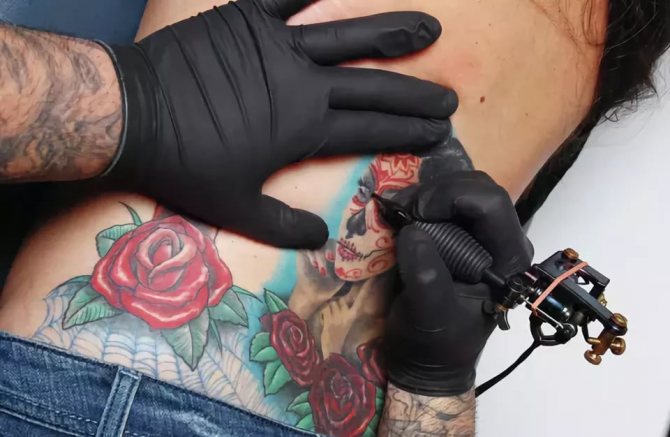

So, now begins the process of applying the tattoo. Modern tattoo masters use an induction machine, but by and large all that is needed is a sharp needle, ink and a mechanism that will pierce the skin with a certain force. Let's look at an example of a more modern method.
The instrument is turned on and brought to the body. The needle is impregnated with a small amount of pigment and it pierces the stratum corneum of the skin and penetrates the dermis. The dermis is the layer of skin that is slightly deeper, it also contains the sebaceous glands and hair follicles. A dosed amount of dye remains in it. This piercing occurs thousands of times and at this time the master slowly leads the machine to the drawing of the sketch.
The application always begins with an outline, which is scored with one fine needle. Next, the shadows are scored. The modern machine has a tip so that you can put several needles at once and the scoring line will be thicker.
healing process
After the ringbearer has filled the entire tattoo pattern, she will need care, but more about this later. The healing process is individual. Time of healing varies depending on the amount of fat on the tattoo, where there is more of it faster, also from the thickness of the lines. Breast, abdomen, hips, buttocks - from 4 to 7 days, other parts such as arms, back, neck, lower leg from 1 to 2 weeks.
On the first day of healing tattoo will be swollen and there will be mucus with pigment, it means that went the healing process of the skin. On the second day, the skin begins to take the ink and no longer secretes the succour for cleansing, there is a feeling of dryness and tightness. On the third day, it starts to itch a lot, but you can't do that categorically. It is possible to spank the place of irritation a little.
The main techniques and methods of training
To start comprehension of a profession of the tattoo master should be with studying of initial techniques and a choice of a way of training.
Beginners are advised to start with these themes
- Old skool (tattoos actively applied 200 years ago);
- Graphics (images similar to the engravings of ancient books);
- Dotwork (dot drawings);
- Watercolor (bright conceptual paintings).
To learn each technique, you need to view tutorials in video format, which can easily be found on YouTube. A more effective option would be a personal observation of the master's work. Asking for a tutorial can be in any tattoo parlor. In this case, not all specialists require payment for the presence of a "student" at the session. Deal can be and for the provision of their services or advertising (in blogger slang - to offer cooperation for barter). Ideally, however, you should enroll in a specialized course where you will be instructed in the key features of each technique and given the opportunity to practice on the body.
Care basics
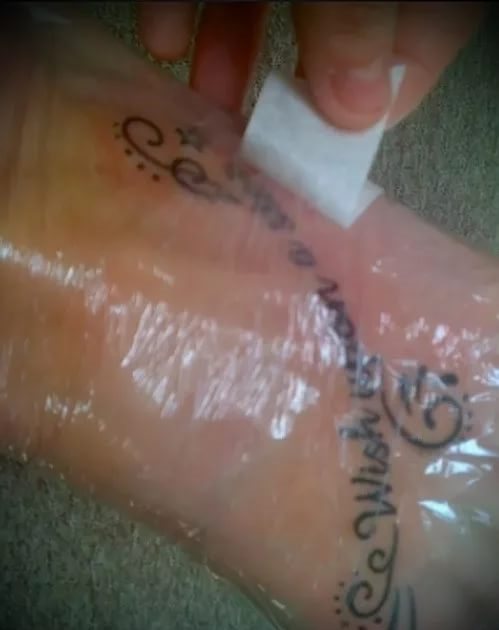

The most important principle in the care of a tattoo in the first stages of healing is to prevent infection from entering your damaged epidermis. Immediately after finishing the work, every master should wrap the tattoo in foil, or better in a bandage. The bandage can not be removed for longer, but no more than 24 hours.
After removing the bandage, you need to wash the tattoo with warm water and soap, after which in no case do not wrap it back. It is important not to use cold or hot water, also do not use a washcloth. Just gently wash your wound with your fingers.
After rinsing, you should not wipe with a regular bath towel, as it accumulates a lot of bacteria, which is the biggest enemy. A paper towel or toilet paper is great. Gently blot the wet surface of your skin, but don't rub it. The washing procedure should be done at least twice a day until the skin is completely healed.
Apply a thin layer of lotion or ointment to dry skin. At first, use an ointment to heal wounds, the most popular remedy is bipanten. Later the skin will be subjected to dryness and you can use any ointment or body milk.
Also in the first few days, wear light and loose clothing that is not tight on the injured area of the skin. Try to avoid being in sweat for long periods of time, and change clothes more often.
An important point! Try not to be exposed to the sun and ultraviolet rays, as this promotes rapid fading of the ink. If you could not avoid it, then use sunscreen, and in general it is your best friend.
How is the healing process after tattooing?
The healing procedure takes a certain time, and its duration depends on the individual characteristics of each person's body. On the first day after the application of the tattoo you can notice that the blocked area of the skin is swollen, there is a certain reddening of the skin and the contour of the image.
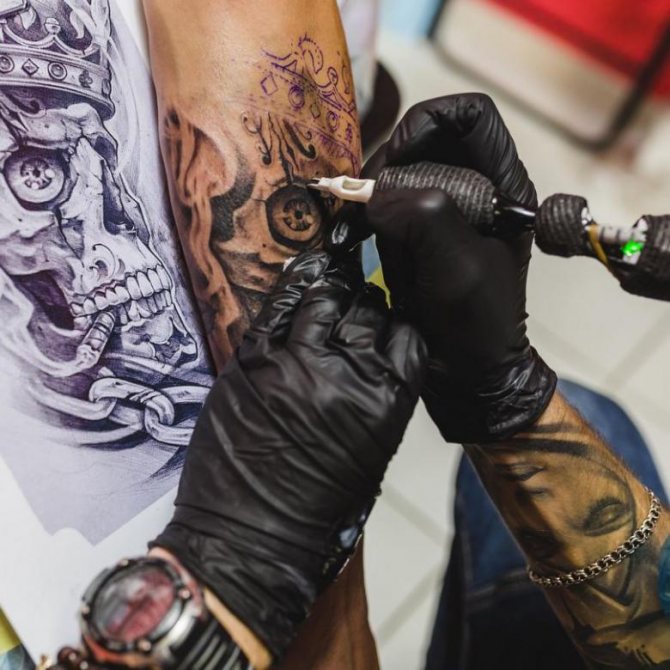

The second day is associated with the appearance of a feeling of dryness and increased tightness of the skin, the surface of the skin stops to secrete the suds. In the process of healing and from about the third day after the application of the tattoo the place of scoring begins to itch, but this is exactly what should not be done, in order to avoid the risk of getting an infection.
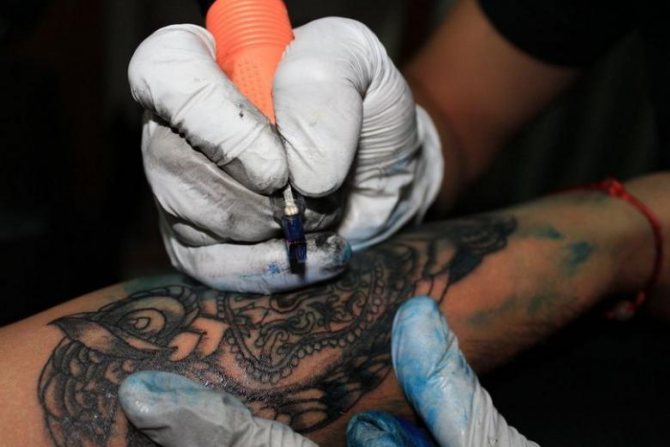

It doesn't matter how long the tattoo is done, for a certain time or it will decorate the body of its owner permanently. An image has to be of maximum quality and look aesthetically perfect, which can be achieved only if you choose a master and a good elephant, to know exactly what image you want to decorate your body.
Harm


The most significant harm from tattoos is the possibility of contracting an infectious disease. Therefore, it is necessary to carefully monitor the disinfection of the entire process and subsequent care.
The next point is the harm of the pigments themselves. They must be of good quality, because wearing ink is not what your skin wants. Because of them can form an allergy, so it is desirable to know exactly what pigments were used, in order to cope more effectively with this problem.
Also the composition of the ink for tattooing is quite toxic, it includes metal oxides and other chemical elements such as copper, zinc, barium, cadmium, mercury. Getting into the blood and subsequently into the organs can lead to acute illness or exacerbation of chronic diseases.
Not seldom now it is possible to meet people with a psychological addiction to tattoos, who cannot resist the opportunity to score a blank patch of skin. Only a psychotherapist or psychiatrist can help here.
Does it hurt to get a tattoo
The concept of pain in this matter is rather relative, in comparative terms it is somewhere between a mosquito bite and a cut of a blade, but it all depends on many factors. Some people, for example, even like this sensation. How painful the whole process will be depends on several factors:
- The skill of the tattooist.
- Body part
- Personal sensitivity to pain
- Time of blocking the area
- The overall condition of the client
Master's skill lies in understanding when to make a pause, the correct application of anesthetic ointments. It is also worth taking into account the tool the ringer uses and its application technique.
Very much affects the painful sensations of the body part. There are 2 main factors: the thickness of the fat layer and the number of nerve endings. The most painful part is on the head, neck, wrists, lower back, knees and lower leg.
Because of the complexity of the element in some areas, you have to go over the same area several times. Repeated piercing of the area, of course, causes more discomfort.
Mental attitude is also important, do not dwell on the pain, try to distract yourself, but do not distract the master. You can listen to music with headphones or read something. You should also attend the session only when you are awake and refreshed. Take a shower, eat a good meal, and get a good night's sleep. The process is quite lengthy and you need to prepare.
The procedure of tattooing and its main stages
After all the stages of preparation, begins the process of tattooing, which takes place according to a certain schedule and consists of several processes:
- drawing a sketch on the body (at a high level of professionalism of the master this process is not carried out);
- drawing the contour, it is hammered using one thin needle, piercing the skin;
- the needle contains a certain amount of pigment that remains in the dermis and colors a certain area.
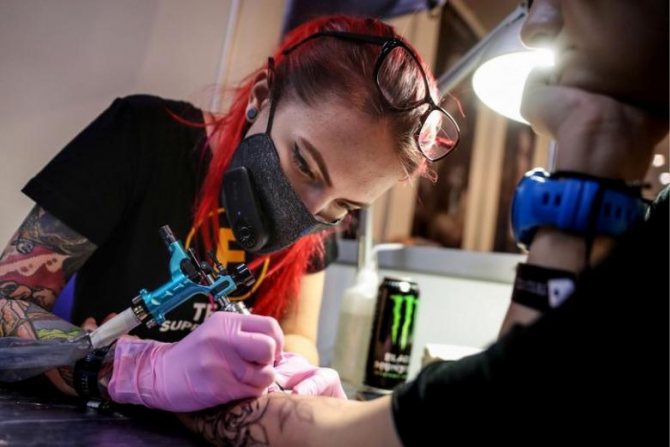

After contouring, shadows are drawn and colored areas are scored, and this method helps to get the highest quality drawing.
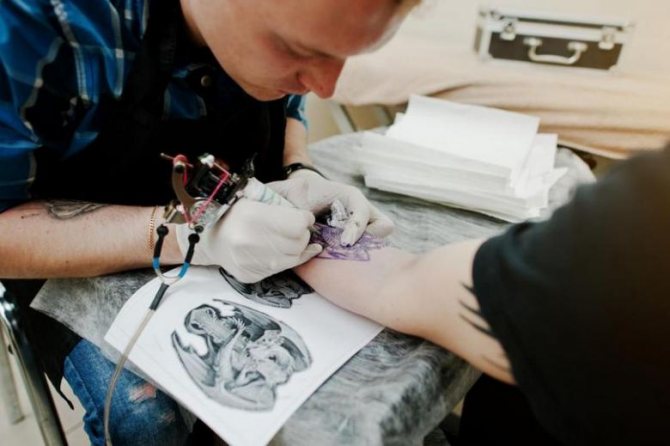

How tattooing is done and its cost


Tattooing is a temporary tattoo in the form of makeup on the face, which allows you to emphasize facial features, correct asymmetry, hide scars and scars.
All the stages of application and healing are absolutely similar to a regular tattoo, the only difference is the tool and pigments. The tool looks like a large pen for writing, only instead of a rod there is a thin needle. Such device pierces only 0.5-1 mm deep into the skin. Because of this and because of the pigment composition for the tattoo is not as harsh as for conventional tattoo, it lasts from 1 year to 5 years.
The cost depends on the complexity of the tattoo, for example, the camouflage of the scar can cost about 10000 rubles, and so the average price of one element whether it be lips, eyebrows or eyes ranges around 5000 rubles. Keep in mind that a greatly reduced price is a sign to think about the level of the master and the quality of paint, and remember that this is the same tattoo and to withdraw it will be as difficult as permanent.
The preparatory process before the tattoo
In preparation for the main procedure includes the stages of selecting a pattern, which must necessarily meet a number of general criteria:
- Combine with the individual style and the inner world of the owner, his hobbies and interests;
- be concise and have a definite meaning, without obvious ambiguity
- combine aesthetics and meaning regardless of the chosen location of application.
If you lack information on the meaning of the tattoo, you can consult with the master beforehand or find the necessary data on our site.
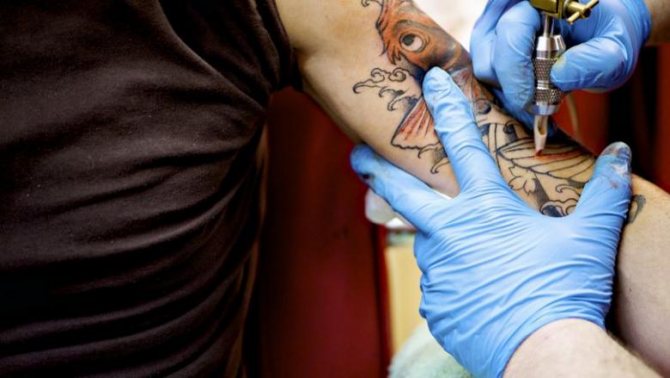

This is important: Do not forget that in most cases, the tattoo remains with its owner for a long time. That is why you should be careful in selecting a sketch, there are a variety of ideas for tattoos, which will certainly be useful to those who want to apply the first image.
Ways of bringing it together


Whatever method you use, you must remember that the skin will never recover to its former state and the area of its trauma will always be greater than the drawn pattern. Nevertheless, tattoo reduction techniques are now achieving good results.
Thermal method: the most highly developed method, performed with a laser. This method allows for tattoos of any size and complexity, in addition it is used for its correction.
Mechanical method: removal of tattoos by dermabrasion. Dermabrasion is a layer-by-layer grinding of the epidermis. It is suitable for removing small size tattoos. It is also used to remove scars, scars, and chemical burns.
Chemical method: based on the removal of pigment through chemicals. It is accompanied by exfoliation of skin particles. A method similar to peeling. The oldest method in which chemicals are applied to the tattoo for several hours and they corrode it, also leaving a chemical burn on the skin.
